Mechanical Behaviour of Green Epoxy Composites Reinforced with Sheep and Dog Wool from Serra Da Estrela
Abstract
:1. Introduction
- Vegetal fibres, which are obtained from various parts of plants (e.g., Ramie, Flax, Hemp, cotton)
- Animal fibres, which are derived from animal hair and secretions (e.g., wool, feathers, silk)
- Mineral fibres, which come from inorganic natural resources (e.g., asbestos)
2. Materials and Methods
2.1. Materials
2.1.1. Fibres
- Serra da Estrela sheep wool
- Serra da Estrela dog wool
2.1.2. Green Epoxy Resin
2.2. Methods
2.2.1. Fibre Characterization
- X-Ray Diffraction (X-RD)
- Tensile tests of the fibre yarns
- Scanning Electron Microscope (SEM)
2.2.2. Production of the Textile Structures
2.2.3. Production of the Composites
2.2.4. Mechanical Tests of the Composites
- Flexural tests
- Tensile tests
3. Results
3.1. Fibre Characterization
3.1.1. X-Ray Diffraction (X-RD)
3.1.2. Tensile Tests of the Fibres Yarns
3.1.3. Scanning Electron Microscope (SEM) of the Crocheted Fabrics
3.2. Mechanical Tests of the Composites
3.2.1. Flexural Tests
3.2.2. Tensile Tests
3.3. Scanning Electron Microscope (SEM) of the Composites
4. Discussion
4.1. Fibre Characterization
4.1.1. X-Ray Diffraction (X-RD)
4.1.2. Tensile Tests of the Yarns
4.2. Mechanical Tests of the Composites
4.2.1. Flexural Tests
4.2.2. Tensile Tests
4.3. SEM of the Composites
5. Conclusions
- Influence of the needle diameter and number of yarns used
- Increasing the number of yarns used increases the flexural strength (by 339.11%), the tensile strength (188.07%), and stiffness of the composites;
- Reducing the diameter of the needle used in the reinforcement increases the flexural strength (by 30.17%), the tensile strength (13.31%), and stiffness of the composites;
- Increasing the number of yarns used in the reinforcement increases the composite’s stiffness, which might reduce the ductility of the composite material, and therefore allow the material to endure a lower deformation before breaking (decrease of 9.71%);
- The use of a needle with a larger diameter produces more flexible fabrics, which decreases the stiffness of the composites and allows the material to deform more before breaking (increase of 21.51%);
- Increasing the number of yarns used in the reinforcement increases significantly the toughness of the composites by 141.18% and the reduction in the diameter of the needle used decreases the tenacity by 10.87%.
- Influence of the type of fibre and type of fabric used in the reinforcement
- Flexural tests
- ◦
- The composites reinforced with sheep’s wool have a higher specific flexural strength and higher Young’s modulus than the ones reinforced with dog wool, with an average improvement of 17.44% and 50.93%, respectively;
- ◦
- The composites reinforced with crocheted fabrics have the highest specific flexural strength and Young’s modulus values, with average values of 21.71% and 45.99%, respectively, compared to composites reinforced with woven fabrics, and average values of 137.57% and 186.68%, respectively, compared to composites reinforced with knitted fabrics.
- Tensile tests
- ◦
- Composites reinforced with sheep’s wool have a higher specific tensile strength and higher Young’s modulus than the ones reinforced with dog wool, with an average improvement of 33.16% and 95.06%, respectively;
- ◦
- If the reinforcement is made of dog wool, the composites reinforced with crocheted fabrics have the highest specific tensile strength, but if the reinforcement is made of sheep’s wool, the composites reinforced with woven fabrics are the ones with the highest specific tensile strength;
- ◦
- Composites reinforced with woven fabrics made from dog wool have the highest modulus, but in the composites where sheep’s wool was used, the ones reinforced with crocheted fabrics were the ones with the highest Young’s modulus values;
- ◦
- Composites reinforced with sheep wool fibres exhibit higher strain at first failure/break values if the reinforcement is made by weaving, but if reinforcement is made by crochet or knitting, the composites reinforced with dog wool fibres exhibit the highest values;
- ◦
- Composites reinforced with woven fabrics have the highest deformation at first break/failure values, with an average increase of 14.56% and 187.80% compared to composites reinforced with crocheted and knitted fabrics, respectively;
- ◦
- Composites reinforced by woven fabrics are the ones with the highest toughness, with an average increase of 17.89% and 752.94% compared to composites reinforced with crocheted and knitted fabrics, respectively;
- ◦
- If the reinforcement is made by weaving and crochet, the composites reinforced with sheep wool fibres have higher toughness values than those reinforced with dog wool fibres;
Author Contributions
Funding
Institutional Review Board Statement
Data Availability Statement
Acknowledgments
Conflicts of Interest
References
- Kamarudin, S.H.; Mohd Basri, M.S.; Rayung, M.; Abu, F.; Ahmad, S.; Norizan, M.N.; Osman, S.; Sarifuddin, N.; Desa, M.S.Z.M.; Abdullah, U.H.; et al. A Review on Natural Fiber Reinforced Polymer Composites (NFRPC) for Sustainable Industrial Applications. Polymers 2022, 14, 3698. [Google Scholar] [CrossRef] [PubMed]
- Naik, V.; Kumar, M.; Kaup, V. A Review on Natural Fiber Composite Material in Automotive Applications. Eng. Sci. 2021, 18, 1–10. [Google Scholar] [CrossRef]
- Peças, P.; Carvalho, H.; Salman, H.; Leite, M. Natural Fibre Composites and Their Applications: A Review. J. Compos. Sci. 2018, 2, 66. [Google Scholar] [CrossRef]
- Elfaleh, I.; Abbassi, F.; Habibi, M.; Ahmad, F.; Guedri, M.; Nasri, M.; Garnier, C. A Comprehensive Review of Natural Fibers and Their Composites: An Eco-Friendly Alternative to Conventional Materials. Results Eng. 2023, 19, 101271. [Google Scholar] [CrossRef]
- Murillo, M.; Sánchez, A.; Gil, A.; Araya-Letelier, G.; Burbano-Garcia, C.; Silva, Y.F. Use of Animal Fiber-Reinforcement in Construction Materials: A Review. Case Stud. Constr. Mater. 2024, 20, e02812. [Google Scholar] [CrossRef]
- Ekbatani, S.; Wang, Y.; Huo, S.; Papageorgiou, D.; Zhang, H. Nano-Engineered Hierarchical Natural Fibre Composites with Localised Cellulose Nanocrystals and Tailored Interphase for Improved Mechanical Properties. Compos. Sci. Technol. 2024, 255, 110719. [Google Scholar] [CrossRef]
- Ferreira, D.P.; Cruz, J.; Fangueiro, R. Surface Modification of Natural Fibers in Polymer Composites. In Green Composites for Automotive Applications; Elsevier: Amsterdam, The Netherlands, 2019; pp. 3–41. ISBN 978-0-08-102177-4. [Google Scholar]
- Gowtham, S.; Jeevanantham, T.; Emelda, J.; Edric, J. Investigation on Effect of Fibre Orientation on Mechanical Behaviour of Polymer Matrix Natural Fibre Reinforced Composite Material. Mater. Today Proc. 2024, S2214785324002104. [Google Scholar] [CrossRef]
- Sanjay, M.R.; Siengchin, S.; Parameswaranpillai, J.; Jawaid, M.; Pruncu, C.I.; Khan, A. A Comprehensive Review of Techniques for Natural Fibers as Reinforcement in Composites: Preparation, Processing and Characterization. Carbohydr. Polym. 2019, 207, 108–121. [Google Scholar] [CrossRef]
- Väisänen, T.; Das, O.; Tomppo, L. A Review on New Bio-Based Constituents for Natural Fiber-Polymer Composites. J. Clean. Prod. 2017, 149, 582–596. [Google Scholar] [CrossRef]
- Wambua, P.; Ivens, J.; Verpoest, I. Natural Fibres: Can They Replace Glass in Fibre Reinforced Plastics? Compos. Sci. Technol. 2003, 63, 1259–1264. [Google Scholar] [CrossRef]
- Corrales, F.; Vilaseca, F.; Llop, M.; Gironès, J.; Méndez, J.A.; Mutjè, P. Chemical Modification of Jute Fibers for the Production of Green-Composites. J. Hazard. Mater. 2007, 144, 730–735. [Google Scholar] [CrossRef] [PubMed]
- Mann, G.S.; Azum, N.; Khan, A.; Rub, M.A.; Hassan, M.I.; Fatima, K.; Asiri, A.M. Green Composites Based on Animal Fiber and Their Applications for a Sustainable Future. Polymers 2023, 15, 601. [Google Scholar] [CrossRef]
- Pickering, K.L.; Efendy, M.G.A.; Le, T.M. A Review of Recent Developments in Natural Fibre Composites and Their Mechanical Performance. Compos. Part A Appl. Sci. Manuf. 2016, 83, 98–112. [Google Scholar] [CrossRef]
- Thakur, V.K.; Thakur, M.K.; Kessler, M.R. Handbook of Composites from Renewable Materials, 1st ed.; Wiley: Hoboken, NJ, USA, 2017; ISBN 978-1-119-22436-5. [Google Scholar]
- Talabi, S.I.; Ismail, S.O.; Akpan, E.I.; Hassen, A.A. Quest for Environmentally Sustainable Materials: A Case for Animal-Based Fillers and Fibers in Polymeric Biocomposites. Compos. Part A Appl. Sci. Manuf. 2024, 183, 108216. [Google Scholar] [CrossRef]
- Clothing from Chiengora (Dog) Fibers. Available online: https://textilevaluechain.in/in-depth-analysis/articles/clothing-from-chiengora-dog-fibres (accessed on 21 January 2024).
- Ramamoorthy, S.; Ramadoss, M.; Ramasamy, R.; Thangavel, K. Analysis of Physical and Thermal Properties of Chiengora Fibers. J. Nat. Fibers 2020, 17, 246–257. [Google Scholar] [CrossRef]
- Gomes, A.S.; Fiadeiro, P.T.; Vieira, A.C.; Vieira, J.C. Viability Study of Serra Da Estrela Dog Wool to Produce Green Composites. Polymers 2024, 16, 718. [Google Scholar] [CrossRef]
- Ares-Elejoste, P.; Seoane-Rivero, R.; Gandarias, I.; Iturmendi, A.; Gondra, K. Sustainable Alternatives for the Development of Thermoset Composites with Low Environmental Impact. Polymers 2023, 15, 2939. [Google Scholar] [CrossRef]
- Da Costa, R.R.; Sato, E.S.; Ribeiro, M.L.; Medeiros, R.D.; Vieira, A.F.; Guedes, R.M.; Tita, V. Polyurethane Derived from Castor Oil Reinforced with Long Cotton Fibers: Static and Dynamic Testing of a Novel Eco-Friendly Composite Material. J. Compos. Mater. 2020, 54, 3125–3142. [Google Scholar] [CrossRef]
- Auvergne, R.; Caillol, S.; David, G.; Boutevin, B.; Pascault, J.-P. Biobased Thermosetting Epoxy: Present and Future. Chem. Rev. 2014, 114, 1082–1115. [Google Scholar] [CrossRef]
- Kerni, L.; Singh, S.; Patnaik, A.; Kumar, N. A Review on Natural Fiber Reinforced Composites. Mater. Today Proc. 2020, 28, 1616–1621. [Google Scholar] [CrossRef]
- Rohit, K.; Dixit, S. A Review—Future Aspect of Natural Fiber Reinforced Composite. Polym. Renew. Resour. 2016, 7, 43–59. [Google Scholar] [CrossRef]
- Laitala, K.; Klepp, I.; Henry, B. Does Use Matter? Comparison of Environmental Impacts of Clothing Based on Fiber Type. Sustainability 2018, 10, 2524. [Google Scholar] [CrossRef]
- GreenPoxy. Available online: https://greenpoxy.org/ (accessed on 23 January 2024).
- ASTM D3822-14; Standard Test Method for Tensile Properties of Single Textile Fibers. ASTM International: West Conshohocken, PA, USA, 2020.
- ISO 178 (2019); Plastics-Determination of Flexural Properties. International Standard Organization: Geneva, Switzerland, 2019.
- ISO 527-1 (2019); Plastics-Determination of Tensile Properties-Part 1: General Principles. International Standard Organization: Geneva, Switzerland, 2019.
- ISO 527-4 (2023); Plastics-Determination of Tensile Properties-Part 4: Test Conditions for Isotropic and Orthotropic Fibre-Reinforced Plastic Composites. International Standard Organization: Geneva, Switzerland, 2023.
- Wang, D.; Yang, X.-H.; Tang, R.-C.; Yao, F. Extraction of Keratin from Rabbit Hair by a Deep Eutectic Solvent and Its Characterization. Polymers 2018, 10, 993. [Google Scholar] [CrossRef] [PubMed]
- Wu, M.; Shen, S.; Yang, X.; Tang, R. Preparation and Study on the Structure of Keratin/PVA Membrane Containing Wool Fibers. IOP Conf. Ser. Mater. Sci. Eng. 2017, 254, 042030. [Google Scholar] [CrossRef]
- Rawal, A.; Majumdar, A.; Kumar, V. Textile Architecture for Composite Materials: Back to Basics. Oxf. Open Mater. Sci. 2023, 3, itad017. [Google Scholar] [CrossRef]
- Chowdhury, I.R.; Summerscales, J. Woven Fabrics for Composite Reinforcement: A Review. J. Compos. Sci. 2024, 8, 280. [Google Scholar] [CrossRef]
- Zwawi, M. A Review on Natural Fiber Bio-Composites, Surface Modifications and Applications. Molecules 2021, 26, 404. [Google Scholar] [CrossRef]
- Mishra, R.; Wiener, J.; Militky, J.; Petru, M.; Tomkova, B.; Novotna, J. Bio-Composites Reinforced with Natural Fibers: Comparative Analysis of Thermal, Static and Dynamic-Mechanical Properties. Fibers Polym. 2020, 21, 619–627. [Google Scholar] [CrossRef]




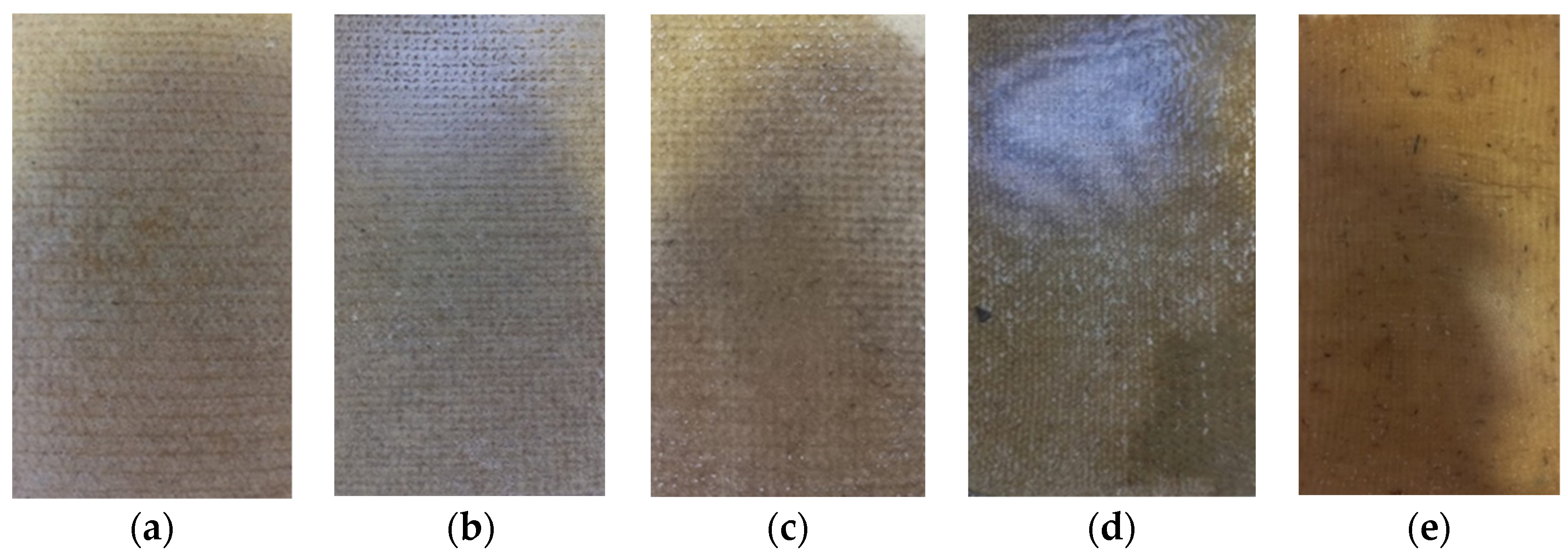
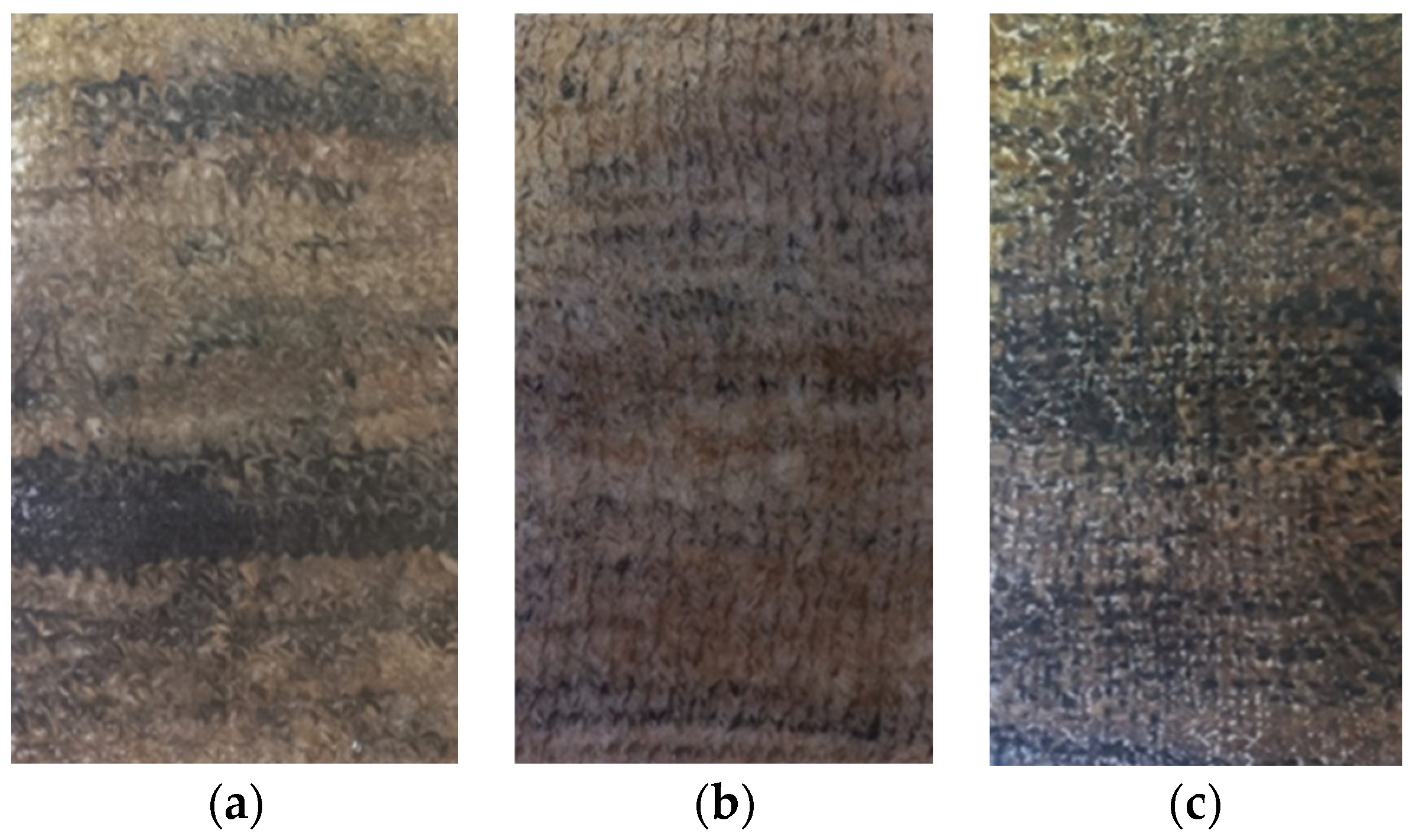
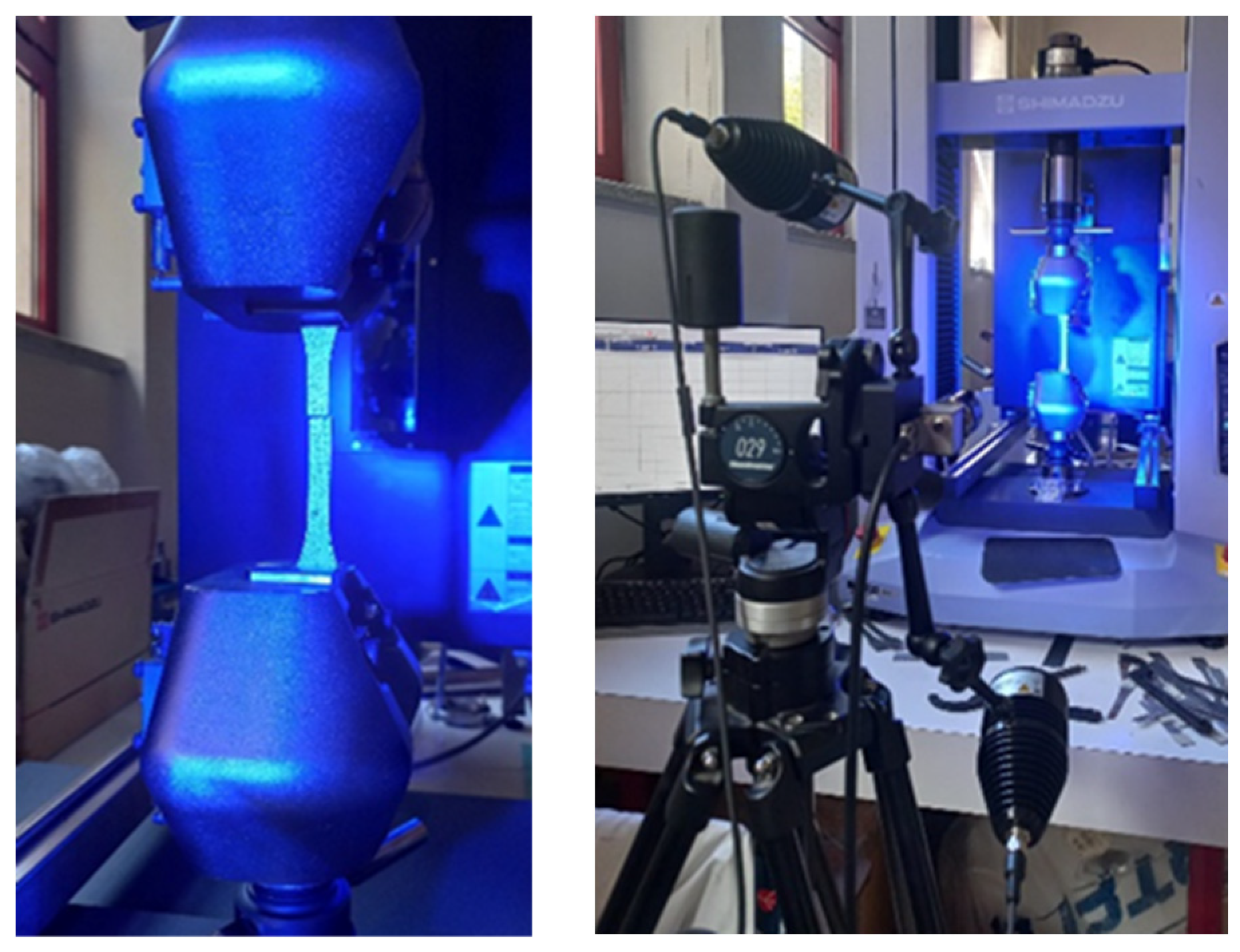
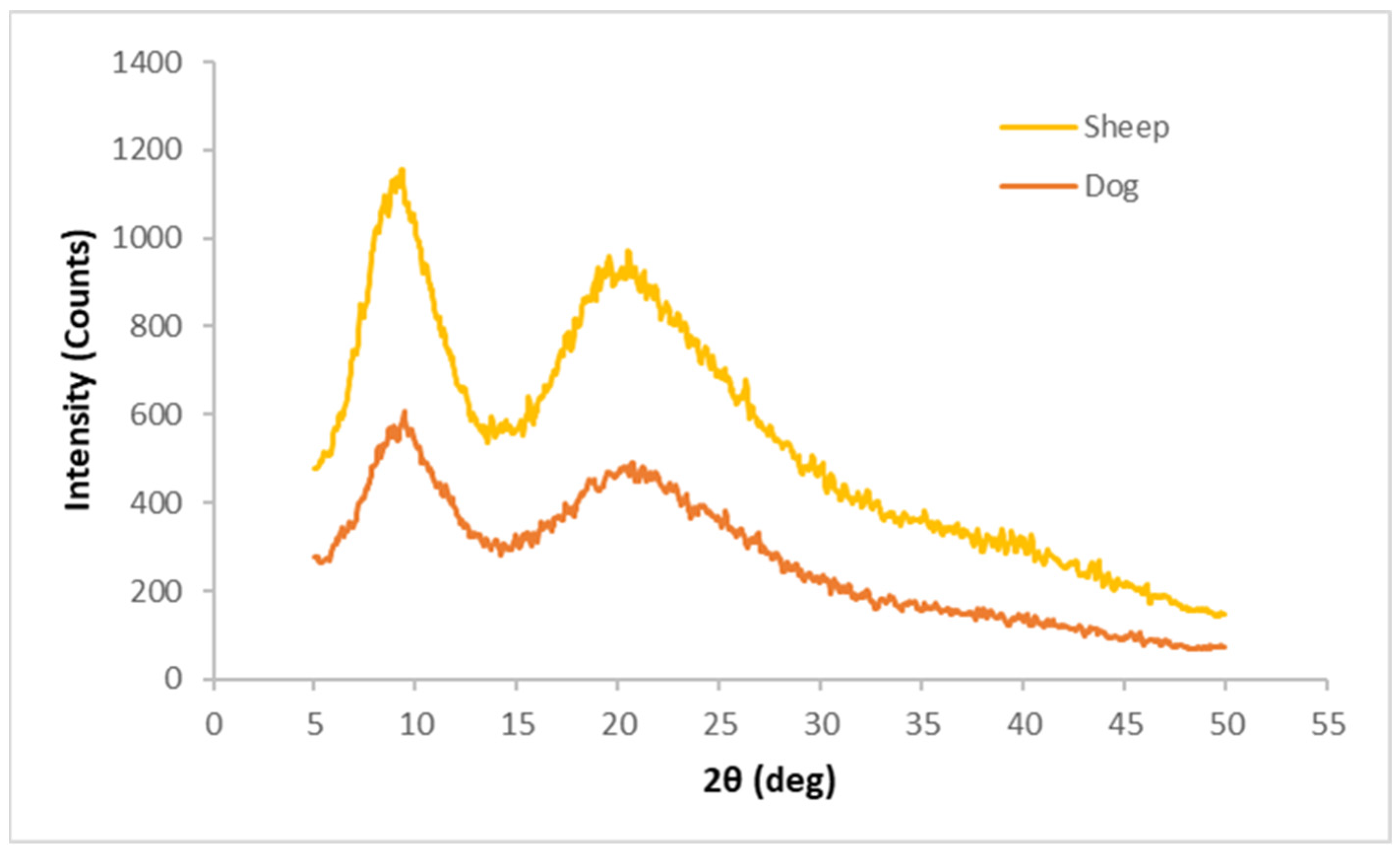
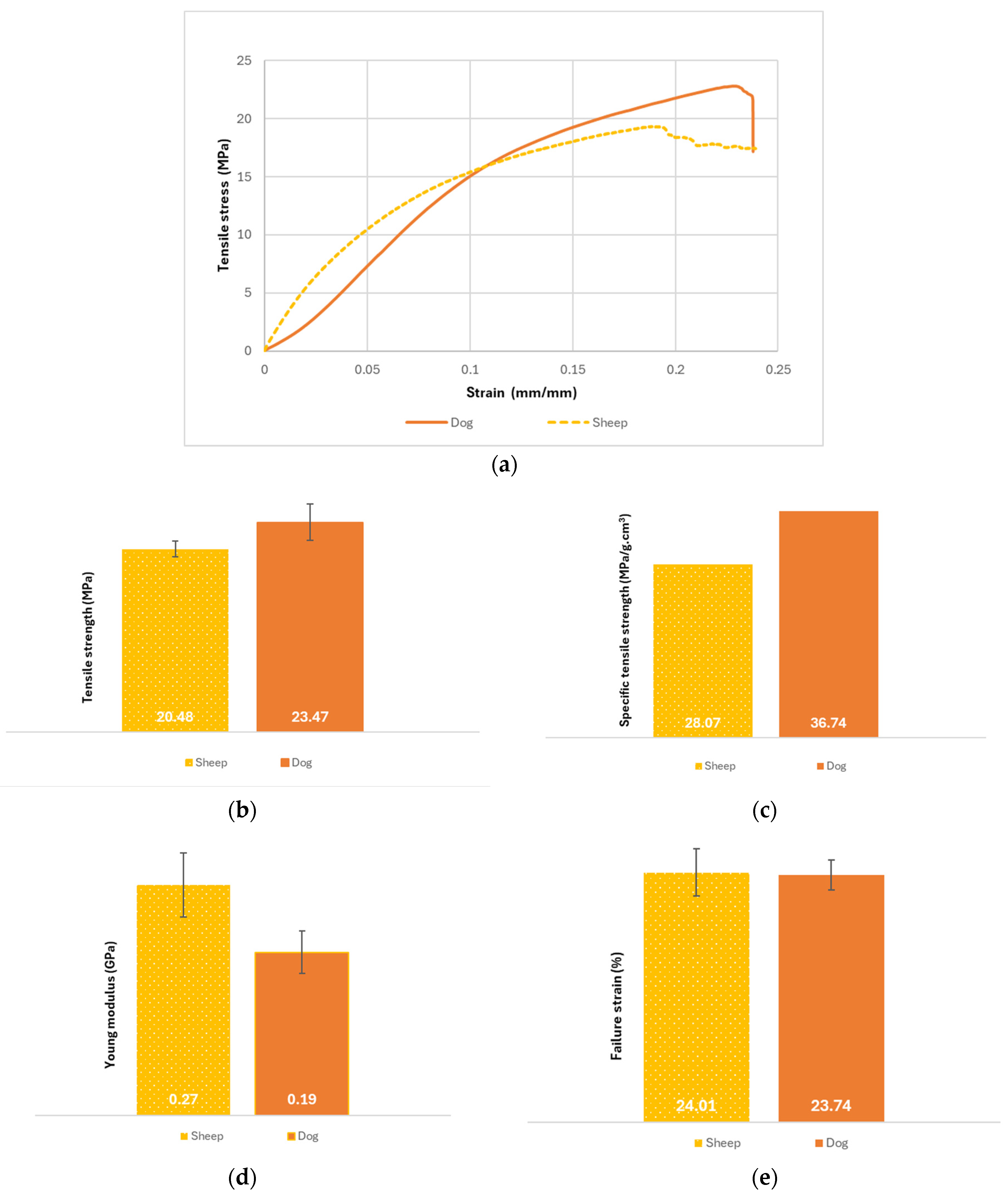

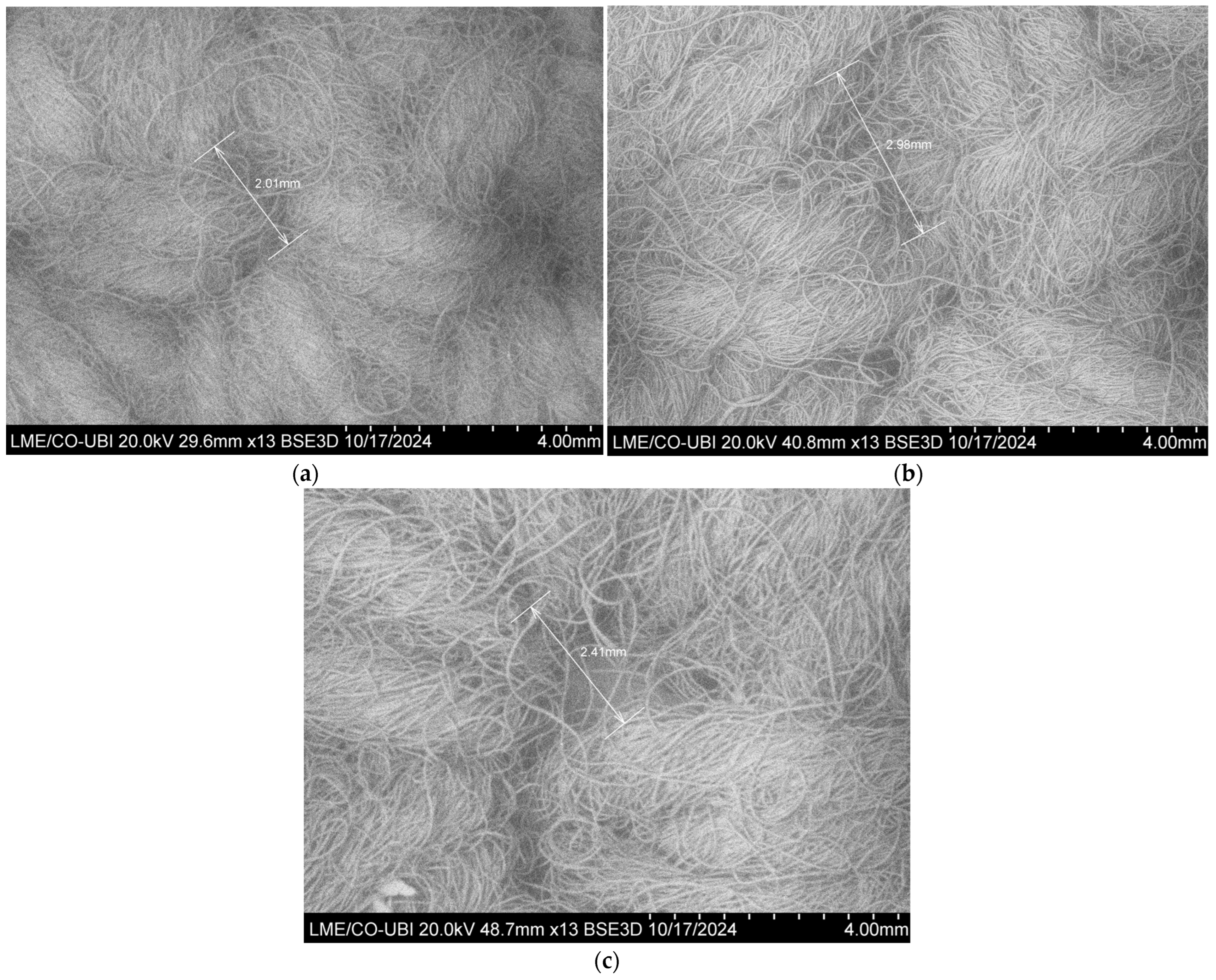


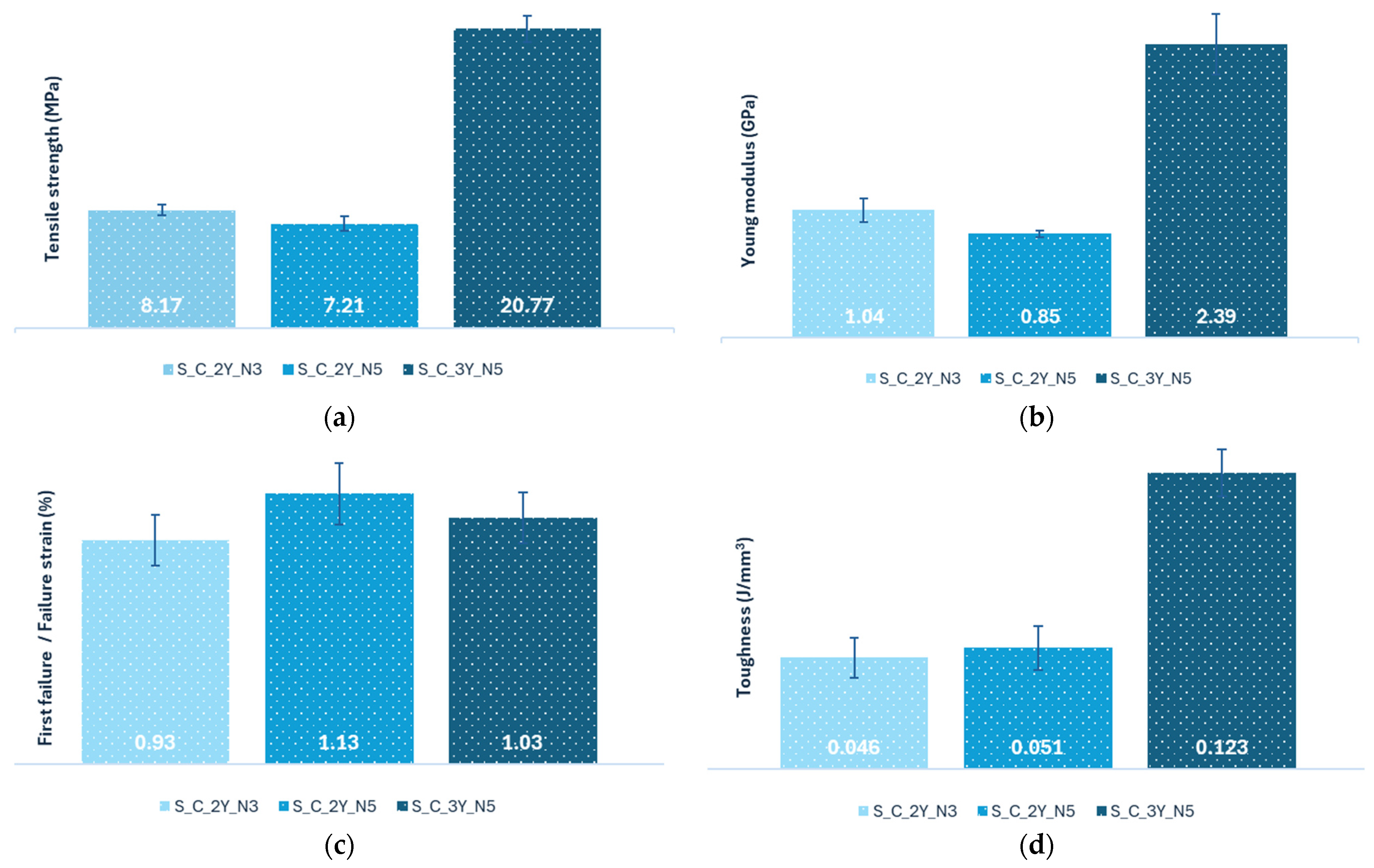
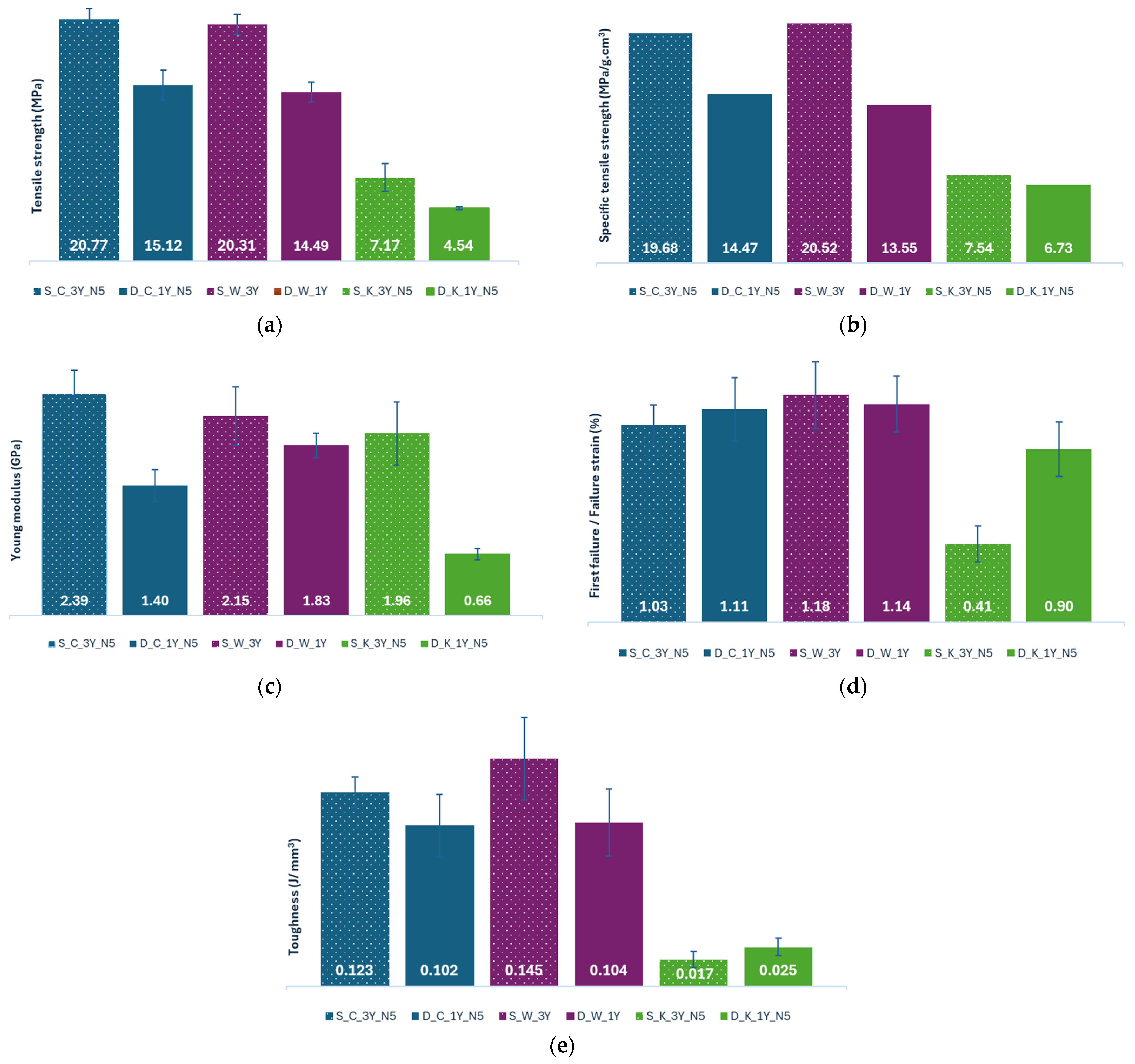
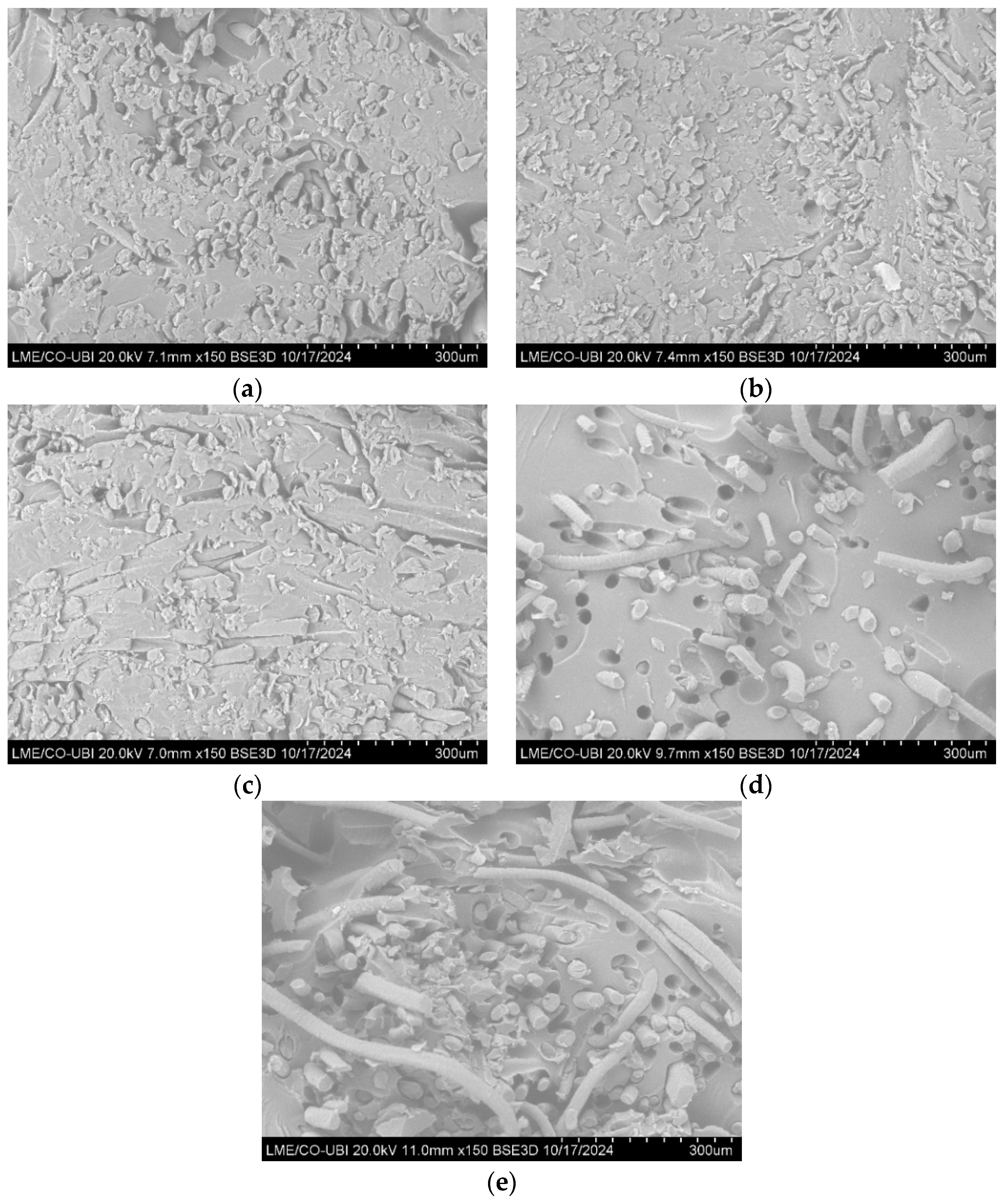
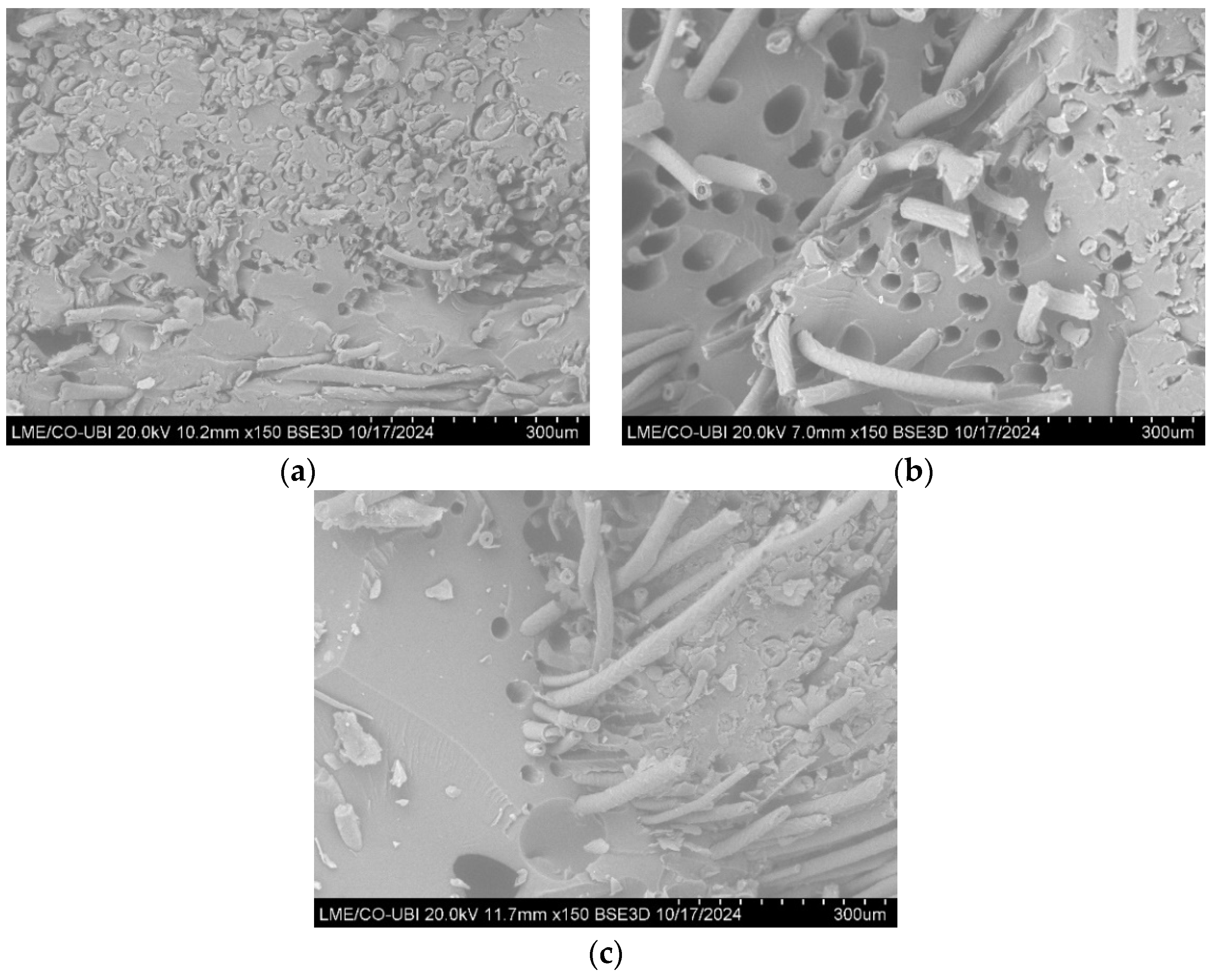
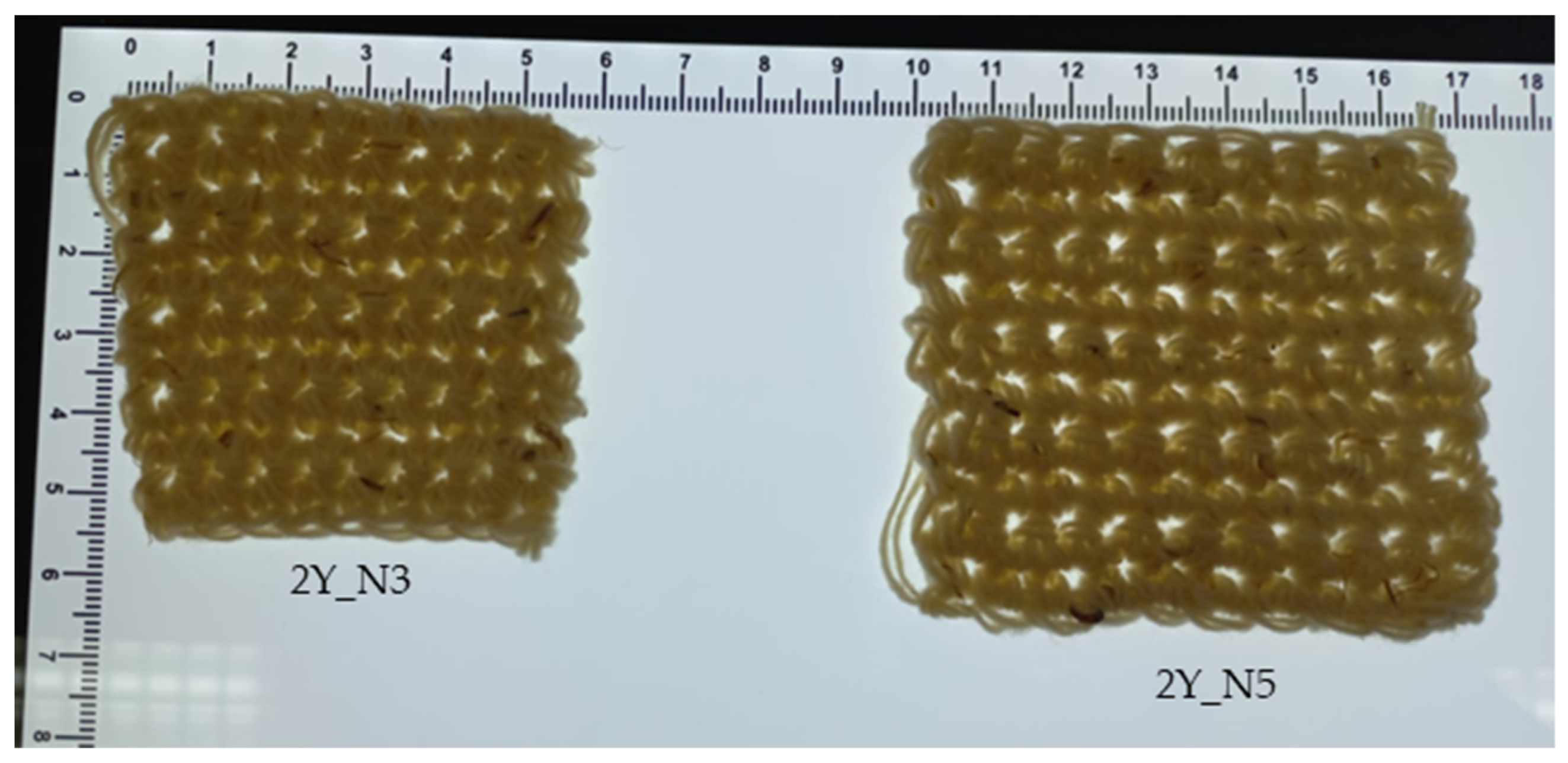
| Fibre | Diameter (µm) | Length (mm) | Density (g/cm3) | Tensile Strength (MPa) | Specific Tensile Strength (MPa/g·cm−3) | Young’s Modulus (GPa) | Specific Young’s Modulus (GPa/g·cm−3) | Failure Strain (%) |
|---|---|---|---|---|---|---|---|---|
| Ramie | 20 | 900–1200 | 1.5 | 400–938 | 270–620 | 44–128 | 29–85 | 2.0–3.8 |
| Flax | 12–16 | 5–900 | 1.5 | 345–1830 | 230–1220 | 27–80 | 18–53 | 1.2–3.2 |
| Hemp | 16–50 | 5–55 | 1.5 | 550–1110 | 370–740 | 58–70 | 39–47 | 1.6 |
| Jute | 17–20 | 1.5–120 | 1.3–1.5 | 393–800 | 300–610 | 10–55 | 7.1–39 | 1.5–1.8 |
| Sisal | 200–400 | 900 | 1.3–1.5 | 507–855 | 362–610 | 9.4–28 | 6.7–20 | 2.0–2.5 |
| Alfa | - | 350 | 1.4 | 188–308 | 134–220 | 18–25 | 13–18 | 1.5–2.4 |
| Cotton | 11–20 | 10–60 | 1.5–1.6 | 287–800 | 190–530 | 5.5–13 | 3.7–8.4 | 3.0–10 |
| Coir | 10–20 | 20–150 | 1.2 | 131–220 | 110–180 | 4–6 | 3.3–5 | 15–30 |
| Silk | - | Continuous | 1.3 | 100–1500 | 100–1500 | 5–25 | 4–20 | 15–60 |
| Feather | - | 10–30 | 0.9 | 100–203 | 112–226 | 3–10 | 3.3–11 | 6.9 |
| Wool | 16–40 | 38–152 | 1.3 | 50–315 | 38–242 | 2.3–5 | 1.8–3.8 | 13.2–35 |
| E-Glass | - | Continuous | 2.5 | 2000–3000 | 800–1400 | 70 | 29 | 0.5–3 |
| S-Glass | - | - | 2.5 | 4570 | - | 86 | - | 2.8 |
| Aramid | - | - | 1.4 | 3000–3150 | - | 63–70 | - | 2.5–3.7 |
| Carbon | - | - | 1.4 | 4000 | - | 23–240 | - | 1.4–1.8 |
| Kevlar | - | - | 1.44 | 3000 | - | 18–25 | - | 2.5–3.7 |
| Property | Value |
|---|---|
| Density (g/cm3) | 1.07–1.3 |
| Length (mm) | 25–355 |
| Diameter (µm) | 15–40 |
| Young’s modulus (GPa) | 2–5 |
| Stretching (%) | 25–50 |
| Property | Value |
|---|---|
| Density (g/cm3) | 1.31–1.34 |
| Length (mm) | 32 |
| Diameter (µm) | 30–60 |
| Young’s modulus (GPa) | 2–3 |
| Stretching (%) | 43.7 |
| Property | Tensile | Flexural |
|---|---|---|
| Young’s modulus (GPa) | 3.3 | 3.4 |
| Maximum strength (MPa) | 49 | - |
| Strength (MPa) | 48 | 114 |
| Strain at max. load (%) | 1.6 | 4.2 |
| Failure strain (%) | 1.6 | 5.5 |
| Sample ID | Fibre Weight (g) | Composite Weight (g) | Fibre Fraction (%) |
|---|---|---|---|
| S_C_2Y_N3 | 42.48 | 121.68 | 34.91 |
| S_C_2Y_N5 | 41.48 | 142.20 | 29.17 |
| S_C_3Y_N5 | 61.20 | 172.23 | 35.53 |
| D_C_1Y_N5 | 62.96 | 165.89 | 37.95 |
| S_K_3Y_N5 | 33.16 | 157.12 | 21.10 |
| D_K_1Y_N5 | 37.04 | 140.74 | 26.31 |
| S_W_3Y | 24.12 | 102.47 | 23.54 |
| D_W_1Y | 35.69 | 110.68 | 32.25 |
| Sample ID | Distance Between Supports (mm) |
|---|---|
| S_C_2Y_N3 | 49 |
| S_C_2Y_N5 | 64 |
| S_C_3Y_N5 | 52 |
| D_C_1Y_N5 | 55 |
| S_K_3Y_N5 | 58 |
| D_K_1Y_N5 | 66 |
| S_W_3Y | 32 |
| D_W_1Y | 40 |
| Sample ID | Vm | Vf | Em (GPa) | Ef (GPa) |
|---|---|---|---|---|
| S_C_2Y_N3 | 0.3427 | 0.6573 | 3.3 | 0.27 |
| S_C_2Y_N5 | 0.2859 | 0.7141 | 3.3 | 0.27 |
| S_C_3Y_N5 | 0.3489 | 0.6511 | 3.3 | 0.27 |
| D_C_1Y_N5 | 0.3472 | 0.6528 | 3.3 | 0.19 |
| S_K_3Y_N5 | 0.2064 | 0.7936 | 3.3 | 0.27 |
| D_K_1Y_N5 | 0.2370 | 0.7630 | 3.3 | 0.19 |
| S_W_3Y | 0.2304 | 0.7696 | 3.3 | 0.27 |
| D_W_1Y | 0.2927 | 0.7073 | 3.3 | 0.19 |
| Sample ID | Isostress Condition (GPa) | Isostrain Condition (GPa) | Experimentally Obtained (GPa) |
|---|---|---|---|
| S_C_2Y_N3 | 0.68 | 22.62 | 1.04 |
| S_C_2Y_N5 | 0.78 | 24.34 | 0.85 |
| S_C_3Y_N5 | 0.67 | 22.43 | 2.39 |
| D_C_1Y_N5 | 0.49 | 22.20 | 1.40 |
| S_K_3Y_N5 | 1.00 | 26.75 | 1.96 |
| D_K_1Y_N5 | 0.68 | 25.63 | 0.68 |
| S_W_3Y | 0.92 | 26.02 | 2.15 |
| D_W_1Y | 0.57 | 23.90 | 1.83 |
Disclaimer/Publisher’s Note: The statements, opinions and data contained in all publications are solely those of the individual author(s) and contributor(s) and not of MDPI and/or the editor(s). MDPI and/or the editor(s) disclaim responsibility for any injury to people or property resulting from any ideas, methods, instructions or products referred to in the content. |
© 2024 by the authors. Licensee MDPI, Basel, Switzerland. This article is an open access article distributed under the terms and conditions of the Creative Commons Attribution (CC BY) license (https://creativecommons.org/licenses/by/4.0/).
Share and Cite
Antunes, C.; Costa, A.P.; Vieira, A.C.; Vieira, J.C. Mechanical Behaviour of Green Epoxy Composites Reinforced with Sheep and Dog Wool from Serra Da Estrela. Polymers 2024, 16, 3115. https://doi.org/10.3390/polym16223115
Antunes C, Costa AP, Vieira AC, Vieira JC. Mechanical Behaviour of Green Epoxy Composites Reinforced with Sheep and Dog Wool from Serra Da Estrela. Polymers. 2024; 16(22):3115. https://doi.org/10.3390/polym16223115
Chicago/Turabian StyleAntunes, Cláudia, Ana Paula Costa, André Costa Vieira, and Joana Costa Vieira. 2024. "Mechanical Behaviour of Green Epoxy Composites Reinforced with Sheep and Dog Wool from Serra Da Estrela" Polymers 16, no. 22: 3115. https://doi.org/10.3390/polym16223115
APA StyleAntunes, C., Costa, A. P., Vieira, A. C., & Vieira, J. C. (2024). Mechanical Behaviour of Green Epoxy Composites Reinforced with Sheep and Dog Wool from Serra Da Estrela. Polymers, 16(22), 3115. https://doi.org/10.3390/polym16223115









